First Dreadnoughts and last Austro-Hungarian battleships:
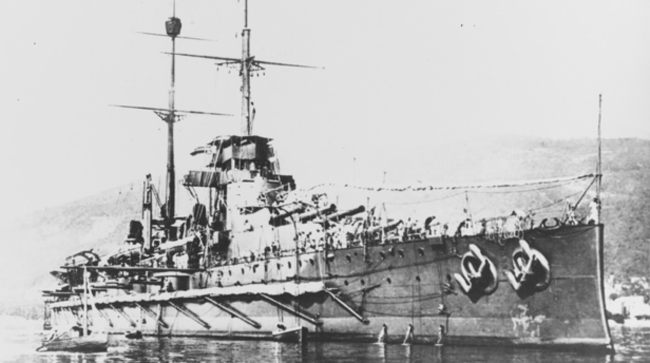
SMS Tegetthoff at anchor
The Tegetthof was also by far the most impressive and the most famous battleship class of the small Austro-Hungarian Navy. In 1908, the Admiralty was aware of its backwardness on foreign navies, all of which had followed Great Britain in the race towards all-big guns fast battleships of the next generation. They succeeded to the Radetzky, arguably ones of the finest pre-dreadnoughts ever built, laid down and started without approval of the parliament. The class was named after Admiral Wilhelm von Tegetthoff, National hero after the battle of Lissa.
Four ships were built, completed just when the war started or soon after. Well armed despite limited dimensions they were formidable adversaries for the Italian Ships but stayed mostly inactive at Pola for the duration of the war, until a 1918 ill-fated sortie which saw Szent Istvan sunk by Italian MAS-boats, while another was sunk at anchor by frogmen.
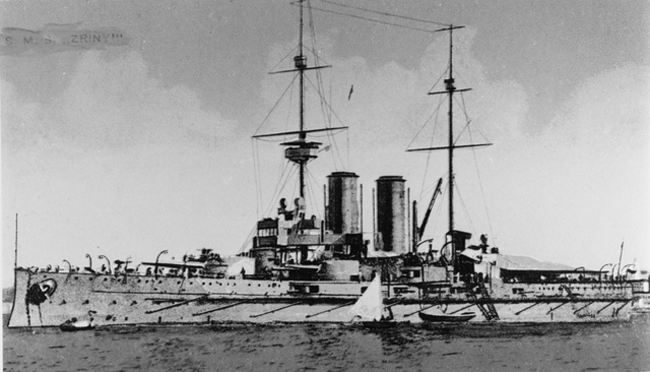
Genesis of the Tegetthof class
While the Radetzky (photo above), excellent classic battleships, were started, she decided to plan for a dreadnought as a new standard: On February 20, 1908, Admiral Monteccucoli already affirmed the necessity to develop new battleships of more than 18 000 tons.
The decisive factor to motivate the parliament in this direction was the launch by the Italians of Dante Alighieri and the construction of four other units. In October 1908, the Naval Office of the Admiralty offered an award to the architects and engineers of the empire, planning 6 months to study carefully the plans thus collected.
In March 1909, STT issued a selection of 5 designs, all with double turrets. But at that moment, the Italians made known their own plans for Dante Alighieri, and their choice of triple turrets.
Laid down at credit
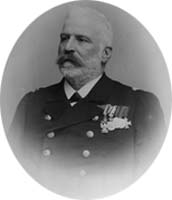 As a result the admiralty ordered a new study. At the same time, the German allies, by special permission of the Emperor, unveiled to the Austro-Hungarian Admiralty the plans of their Kaiser class then in anticipation. But Montecuccoli finally choose to study a clean design, largely influenced by the Italians, neighbors and rivals.
As a result the admiralty ordered a new study. At the same time, the German allies, by special permission of the Emperor, unveiled to the Austro-Hungarian Admiralty the plans of their Kaiser class then in anticipation. But Montecuccoli finally choose to study a clean design, largely influenced by the Italians, neighbors and rivals.
In June 1909, the construction of the first Italian dreadnought was started, while the funds allocated to the construction of Austro-Hungarian dreadnoughts were not even discussed yet (the approval was to be voted in November).
The holds of STT had just been freed with the launching of the first two Radetzky, also at the same time to avoid a technical unemployment of the workmen and to save time, admiral Montecucoli ordered the yard to start the construction of the first two units in 1910 without waiting for the vote.
Viribus Unitis and Tegetthof were laid down in July 1910 when the funds, against all odds had been refused for political reasons. Monteccucoli then actively engaged in a propaganda campaign for the benefit of these ships, which were built on credit. 32 million crowns were thus allocated without guarantee of a later government backup in the construction of the first two dreadnoughts.

The world’s first triple turrets battleships
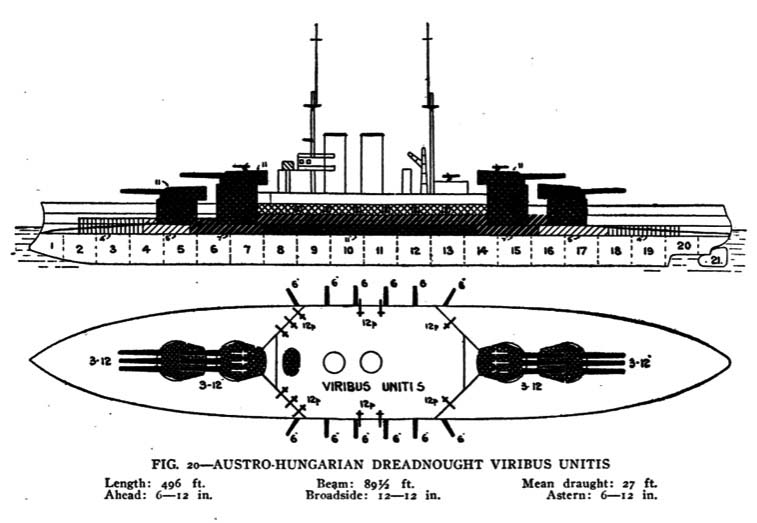
It was not until March 1911 that a new meeting of the parliament committee was held to vote the funds later in the year. At the same time, the completion of Dante Alighieri, the confirmation of four other Italian battleships, and the construction of the French Courbet, based in the Mediterranean, lent credence to Monteccucoli’s approach.
Finally the funds were approved in the budget of 1911, and renewed in 1912 for two other warships, which will be the Prinz Eugen (started at STT in January 1912), and the Szent Istvan (put on hold the same day at Danubius yards of Trieste, brand new, and designed for next-generation dreadnoughts of 25,000 tonnes Technically, these ships were the first in service worldwide with triple turrets (Dante Alighieri was not yet operational when the Viribus Unitis was accepted in service, in December 1912), moreover, by managing to assemble no less than 12 heavy guns on a hull of small dimensions and with a tonnage limited to 20,000 tons as standard.
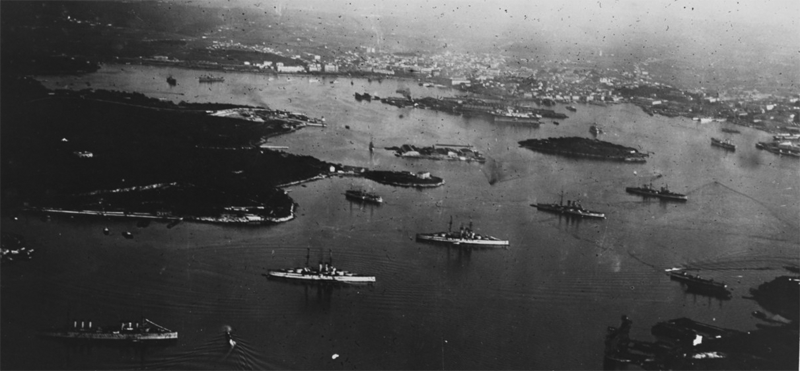
Pola in 1918, showing the fleet and two battleships at anchor, probably after the reddition and a French six-funneled cruiser is at the foreground.
Design of the Tegetthof class
The final plans bore the mark of F. Popper, retired from the shipbuilding department at the Admiralty and who had been a consultant since 1907 for STT. He synthesized the various projects and came up with a ship that was once again quite compact and heavily armed. However protection was still somewhat sacrificed to speed, including the underwater protection, rather rudimentary.
(This will be paid dearly in operations). They had a continuous deck, which gave the main and secondary turrets a high position, favorable to their efficiency in heavy weather, but the metacentric point remained high and therefore stability was questionable. This was superbly demonstrated with the quick capsize of Szent istvan after her torpedoing. Secondary artillery was the same standard adopted by other marines, 6-in (150 mm) in barbettes, and a tertiary artillery standardized with 2.6 in (66 mm) pieces.
Their torpedo tubes were of the new standard of 21 in (533 mm), and this time with a fixed bow tube. For the first time, they used Turbines, licensed by British Parsons, and naturally coupled to Yarrow boilers (Szent Istvan used AEG-Curtiss turbines and Babcok & Wilcox boilers). With 20.3 to 20.5 knots on trials, they were in the speed norm for this category of battleships. They only loaded 2000 tons of coal, which was not seen as a problem in the Adriatic.
Machinery
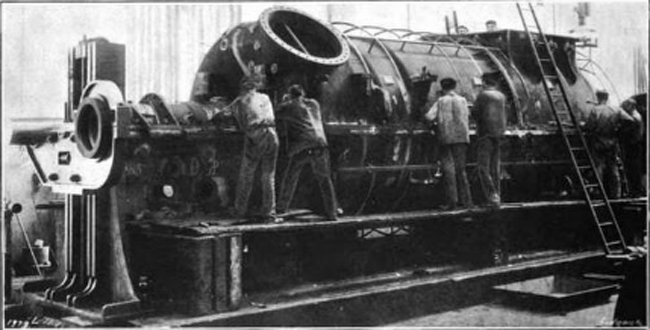
SMS Tegetthoff Turbines
Since three battleships were constructed in Trieste and one in Fiume propulsion diverged a bit. Szent István indeed possessed two shafts connected to two Parsons steam turbines. All the other had each had four. However in all cases, a separate engine-room was created, and these turbines were powered by twelve Babcock & Wilcox boilers.
They produced a total of 26,400 or 27,000 shaft horsepower (19,686 or 20,134 kW). Designed speed was 20 knots (37 km/h; 23 mph). Reported trials speed (Tegetthoff) was 19.75 knots (36.58 km/h; 22.73 mph). These ships also carried 1,844.5 tonnes (1,815.4 long tons) of coal,plus a 267.2 tonnes fuel oil reserve to be sprayed on the coal to facilitate overheating and thus obtain more power. This provision was sufficient for 4,200 nautical miles (7,800 km; 4,800 mi) at 10 knots (19 km/h; 12 mph).
Armament
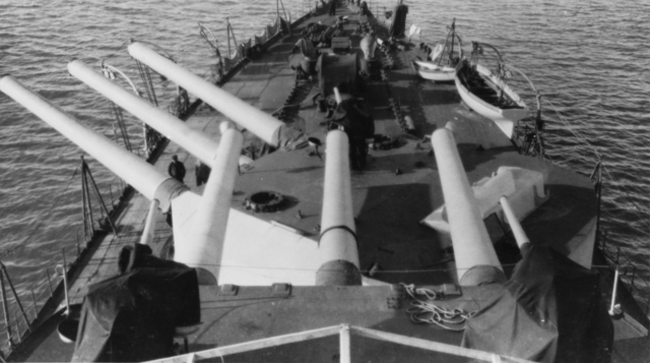
SMS Prinz Eugen guns. Notice that 1937’s German heavy cruiser KMS Prinz Eugen was named after her, presumably sailing with Austrian crews.
The main artillery came from Škoda Works in Plzeň, Bohemia. Twelve 45-calibre 30.5-centimetre (12 in) Škoda K10 guns were provided for each ship (so 48 total plus spares to replace worn out barrels) mounted in four triple turrets.
They were mounted forward and aft in superfiring pairs. The triple turrets helped the ship to keep a more compact design, more concentrated armour and smaller displacement. This was also trigerred by the Choice of Italy with the Dante Alighieri.
Shipyards in Trieste really raced against time and the Viribus Unitis were therefore released faster than their Italian counterparts, a month before Dante Alighieri, earning the title of “world’s first” for this gunnery arrangement.
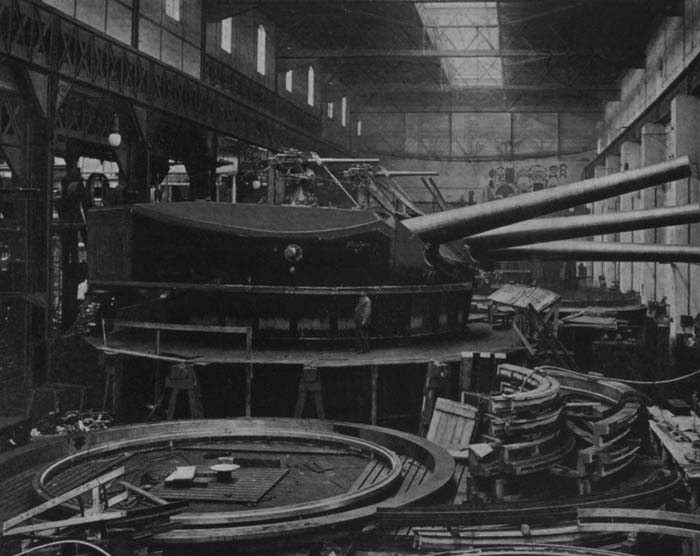
On the Dante, the Italians did not have the same constraints on the ship hold size and their dreadnought was longer with turrets spread on the same level on the deck rather than in superfiring pairs, just like the Russian Gangut class.
This arrangement also allowed the Austro-Hungarian ships to fire a heavier broadside, and for protection, a shorter citadel and better weight distribution also helped to protect it. Another crucial factor in the adoption of triple turrets was bacuse Škoda had already been working on a triple-turret design precisely for the Imperial Russian Navy (Gangut class).
The Tegetthoff’s secondary artillery comprised a dozen of barbette-mounted 150 mm/50 (5.9 in) Škoda K10 guns amidships. To deal with TBs, eighteen 70 mm/50 (2.8 in) Škoda K10 guns were mounted on open pivot mounts on the upper deck and three more on the upper turrets, wthis time with AA mounts. Two more 8 mm (0.31 in) Schwarzlose M.07/12 anti-aircraft machine guns were placed atop the rangefinders armoured cupolas.
Two 70 mm/18 (2.8 in) Škoda G. were used as dismounted landing guns, and an additional two 47-millimetre (1.9 in) Škoda SFK L/44 S guns provide an additional fast response against TBs and submarines. As a tradition, these battleships were also fitted with four 533-millimetre (21.0 in) submerged torpedo tubes, covering all angles, bow, stern, and broadside, with twelve torpedoes in reserve.

Protection
As we seen above, the battleship’s protection was adjusted to the limited dimensions and compact design of the ship. The armor belt was 280 mm (11 in) thick in the central citadel, and was down to 150 mm (5.9 in) on each ends, but not extended to the stern but a small patch of 110–130-mm (4–5 in) was maintained up to the bow. The upper armor belt was 180 mm thick, down to 110 mm (4.3 in) and the casemate also 180 mm. The turrets sides, barbettes, conning tower were all 280 mm thick (not the roofs).
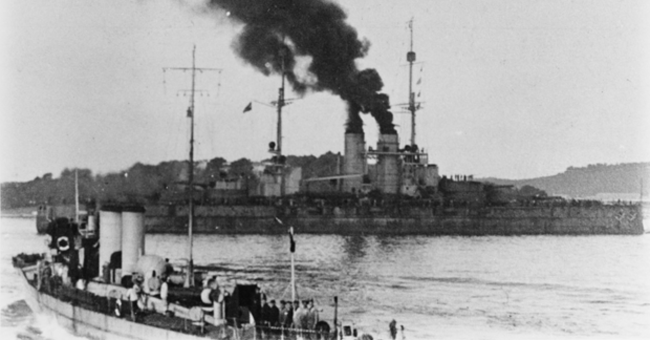
The decks were protected by 30 to 48 mm of armor in two layers, backed with wood. The underwater protection comprised a double-bottom with only 10 mm (0.4 in) plating on the outer bulkhead. There was behind still a torpedo bulkhead 25 mm thick, whereas the the total thickness of ths sandwich was limited to 1.60 m (5 ft 3 in). Therefore, a torpedo explosion was was capable of piercing it, as shown in a grizzly way in 1918.
Interestingly enough, there were adoubt already about this ASW system and in early 1909, Montecuccoli sent an officer to Berlin to obtain some input and adviced from Alfred von Tirpitz based on the Tegetthoff class blueprints.
Gunnery and torpedo tests have them asking that “The angle between the armored deck and belt armor should be as flat as possible”, adding that it should be angled inwards while the internal layed should be outwards while distance in this cofferdam should be of 4 meters. Popper took note of these suggestions but only for the external layout of the belt armor. The ASW protection was not revised.
Career of the Tegetthof class
Video Footage of the ships in exercizes.
These battleships were completed each year, the Viribus Unitis in December 1912, the Tegetthof in July 1913, the Prinz Eugen in July 1914 (operational in August), and the Szent Istvan in December 1915 only. (The latter suffered the repercussions of the war, sending some of the workers to the front, the lack of strategic materials, the emergence of new priorities).
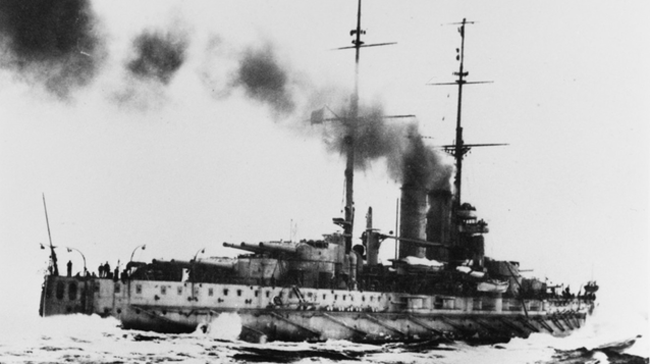
SMS Prinz Eugen on trials
They were widely praised when built, including by the international press, as the first dreadnoughts built in the Mediterranean, the most powerful warships in the region. This gave the old Empire a short era of supermacy over Italy, at least until the more modern Guilio Cesare and Cavour were released. Until then, Italy only had one dreadnought, the Dante.
The ships however were also criticized as being too small, cramped, with a reduced range, and poor stability. There were also criticisms after the war about the bad workmanship and riveting of the Szent István in particular. Poor riveting (perhaps because of the speed the ships had to be made) was blamed as a potential cause for the leakages that doom the ship when hit.
Naturally, these four ships anchored at Pola formed the spearhead of the Austro-Hungarian navy, within the 1st division of line. Modern and formidable, they were the most active battleships of the navy: In August, the first three shelled and shattered the fortifications and coastal batteries of Cattaro (currently Kotor in Montenegro) and other objectives of the coast. They sailed to Pola and made another sortie during Italy’s declaration of war in May 1915, shelling targets on the Italian coast.
Recreation of the end of Szent Istvan in June 1918 (Fr) – A 2008 Germany, France, Hungary, Italy and Switzerland co-production
In June 1918, they were taken out of the inaction in an attempt of a night raid against the Otranto Dam, in which they formed the backbone of the deployed naval force. However Szent Istvan was torpedoed and sunk en route on the night of 9-10 June off Premuda island by the Italian MAS15 boat and the entire operation was canceled.
On November 1, 1918, when the ships were officially under Yugoslav control, Italian frogmen, after entering the harbor of Pola, laid a portable mine on the hull of the Viribus Unitis, causing a strong underwater explosion. She capsized and sank quickly.
SMS Tegetthof was awarded to Italy in war damage and it was broken up in 1922. SMS Prinz Eugen was allocated to France, which used her as an unarmed test ship and then as a target for gunnery pactice. She was sunk on June 28, 1922 off Toulon. Some of her guns were said to have been preserved and used by the Germans to be installed in the Atlantic wall in 1943-44.
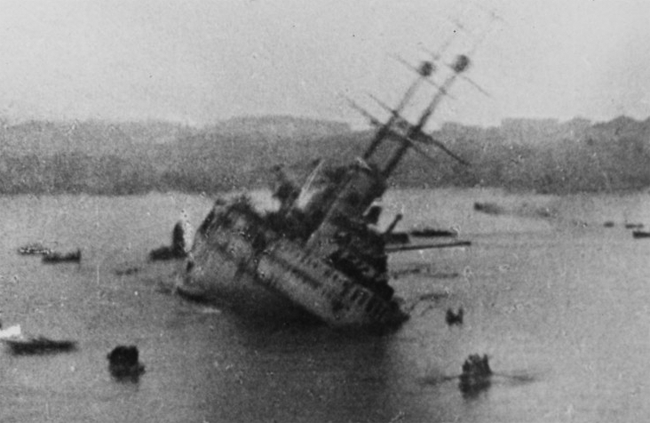
SMS Viribus Unitis sinking
The June 1918 Oranto raid that never was, and the end of Szent Istvan
Historical footage about the raid and famous sinking. The press was invited on board to report a stunning success of the fleet. Instead a tragedy was immortalized.
Young Admiral Horthy, freshly in charge of the fleet was determined to use it to attack the Otranto Barrage. Basically it was to be a repeat of the May 1917 Otranto raid, but Horthy wanted a massive stroke with all ships available rather than throwing a fast cruiser. The four Tegetthoff-class ships were of course at the core of this plan, since no allied ship nearby could compete.
In addition were to sail the three Erzherzog Karl-class pre-dreadnoughts and three Novara-class cruisers, plus the Otranto veteran Admiral Spaun, escorted by four Tátra-class destroyers, and four TBs. Submarines would also screen the fleet and create a retreat barrage in case. Aviation was also to povide intelligence about allied ships in the area and track down and eliminate flanking attacks.
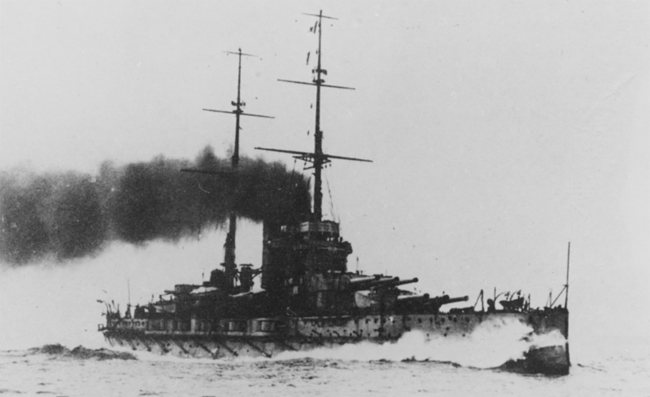
SMS Prinz Eugen underway
On 8 June 1918, Horthy raised his mark on the Viribus Unitis. Prinz Eugen was to lead the squadron and sailed first. They were followed on the evening of 9 June by Szent István and Tegetthoff and their escort. Novara and Helgoland were to destroy the Barrage with the Tátra-class destroyers, Admiral Spaun and Saida shell the Italian air and naval stations while submarines were to set up a trap in front of Valona and Brindisi to prevent any move and reinforcement from the allies. The big guns of the Tegetthoff, while used to destroye the barrage would also be engaged to prevent any counterattack by ships already at sea, whatever their rank and tonnage.
The two battleships had to report north of Ragusa to join Viribus Unitis and Prinz Eugen and both sailed at full speed, but this caused Szent István’s turbines to overheat. Speed was then reduced to 12 knots (22 km/h; 14 mph) and later 16 knots (30 km/h; 18 mph) but the unfortunate battleship started to pour out an excess of smoke. At 3:15 am on 10 June two Italian MAS boats patrolling (MAS-15 and MAS-21) spotted the smoke. Luigi Rizzo, already awarded for the loss of SMS Wien in Trieste six months before was to lead the attack.
By night, all lights shut, both MTBs penetrated the escort perimeter and split to target each dreadnought. MAS-21 torpedoed but failed SMS Tegetthoff, while MAS-15 fired two torpedoes successfully that hit Szent István. Both MAS evaded the escort, MAS-15 dropping depth charges in her wake. Tegetthoff pulled out of the formation and started to zigzag, cutting down her speed and fired on suspected submarine periscopes.

SMS Szent istvan in 1915
However SMS Szent István meanwhile has been crippled by the two 18 in torpedoes. They hit just abreast her boiler rooms which quickly flooded and the ship started to list 10° to starboard. Counterflooding portside reduced it to 7° but this was only retarding the inevitable. She steered for the the Bay of Brgulje in an attempt to beach her and save the crew. But in order to save power for the pump, she had to stop. Eventually two more boilers on the port side were flooded, cutting the power for the pumps. While the the turrets were turned to port to balance a bit of weight and ammunition thrown overboard, the list only increased.
An attempt was made at 4:45 am by Tegetthoff to take her in tow. Despite all the efforts and despite of the last remaining pumps still working at 6:12 am SMS eventually Szent István capsized off Premuda (the part filmed). She carried with her 89 sailors and officers. Fortunately the rest of the crew has been evacuated. Her captain, Heinrich Seitz, settled to go with her ship when he was wapparently thrown off the bridge by rishing air when the ship capsized and was saved.
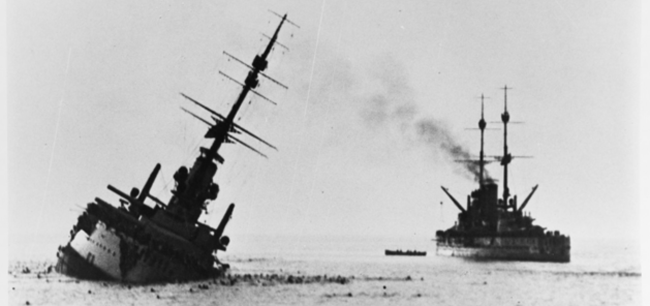
The dreadnoughts of this class were only the first of a vast plan spanning ten years, and were to be followed by the 4 “improved Tegetthof”, official replacement of the old Monarch. Their hulls numbered VIII to XI were to be put to STT and Danubius between July 1914 and June 1916 but were canceled.
The “Improved Tegetthoff” class
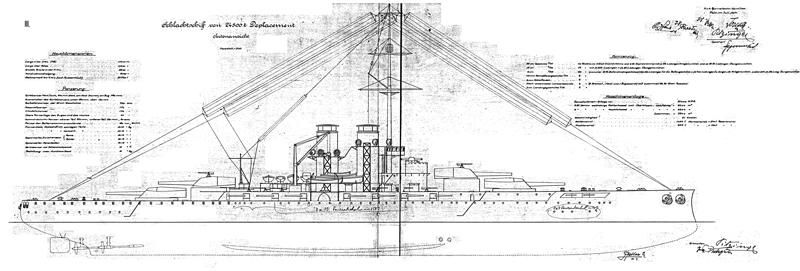
Original blueprint of the Ersatz Monarch.
When it came about replacing the old Monarch-class coastal defense ships, an improved Tegetthoff design was called for. They were also called by many author’s as the “Ersatz Monarch” class. But they only were officially known as “battleship VIII to XI”. We will dedicate a whole post to these ships at a latter date.
But in great lines, the new battleships were “inspired” rather than “repeats” of the Tegetthoff. They would have been improved in all and every direction while keeping the same general configuration of twelve main guns in turrets fore and aft in superfiring pairs. However they were 173 m long and displaced 24.600 tons rather than 21,500 tons.
One of the proponents of the class was Skoda itself, arguing the necessity of keeping its workforce skills sharp, requesting following business. The company submitted a new gun design with a 345 mm bore (13.6 in), close to the contemporary British 343 mm guns. An due to the added weight and stability concerns, proposed a design where the upper turrets were twins rather than triple.
While the naval section rejected Skoda’s proposal in 3, June, 1911 they ordered preparatory works for a successor design. Their 23,000 tons, 10 guns design could then fit into floating drydock N°1, and again, range would be sacrificed; In December they went with an A and B designs, and soon 26 alternative designs were presented by STT, Danubius, and CNT. However Popper’s successor, Pitzinger rejected all these designs, and in May 1912 it was agreed the new caliber should be 350 mm.
In January 1913 the design rose to 23,800 tonnes and in January 1914, Austrian architects presented a 29.600 tons, 23 knots battleship, the additional displacement and size to accomodate more boilers. The second variant was still impressive, with no less than 13 main guns. On the political side, the parliament rejected any contructions on credit in 1913 and the final vote for credits was granted with orders in end of June 1914. But when the keels were laid down at STT and Danubius, the war broke out ans all work stopped. Skoda, that already provided the new 350 mm guns and a complete turret saw the first gun used on the Italian Front on May 1916. Prospects to reuse armor plates dropped when Italy declared war in 1915.
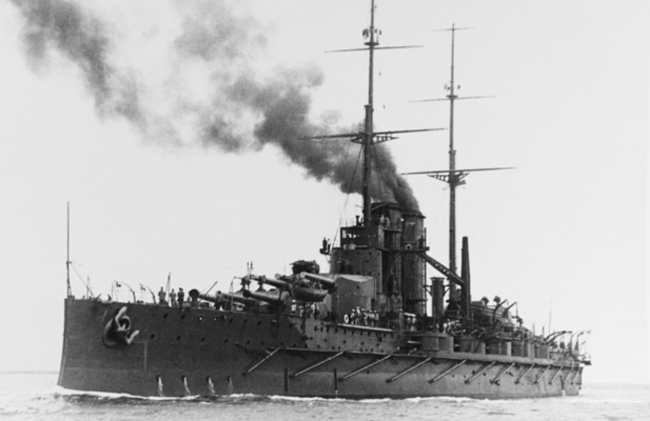
SMS Viribus Unitis in 1912
Tegetthoff class specifications |
|
| Dimensions | 152,5 x 27,3 x 8,9 m (498 ft 8 in x 91 ft 6 in x 28 ft 7 in) |
| Displacement | 20 000 tonnes, 21 600 Tonnes FL |
| Crew | 1087 |
| Propulsion | 2 shafts, 2 Parsons turbines, 12 Yarrow boilers, 27 000 hp |
| Speed | 20.3 knots (37 km/h; 22 mph) – 20.7 knots trials |
| Range | 4,200 nmi (7,800 km or 4,800 mi) @ 10 knots (19 km/h or 12 mph) |
| Armament | 12(4×3) x 305 mm (12 in), 12 x 150 mm (6 in), 20 x 66 mm (2.6 in), 4 TT 533 mm (21 in) (sub). |
| Armour | Belt 280, casemates 180, citadel 50, turrets 280, blockhaus 280, decks 48 mm. |
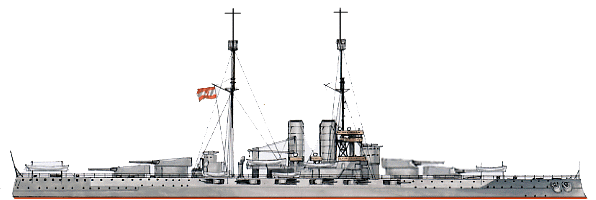
Author’s illustration of the Herzherzog Karl in 1915
Src/ Read More
Tegetthoff class battleship (wiki)
A must see: viribusunitis.ca
On fr.naval-encyclopedia.com
Conway’s all the world’s fighting ships 1860-1905


 Latest Facebook Entry -
Latest Facebook Entry -  X(Tweeter) Naval Encyclopedia's deck archive
X(Tweeter) Naval Encyclopedia's deck archive Instagram (@navalencyc)
Instagram (@navalencyc)





 French Navy
French Navy Royal Navy
Royal Navy Russian Navy
Russian Navy Armada Espanola
Armada Espanola Austrian Navy
Austrian Navy K.u.K. Kriegsmarine
K.u.K. Kriegsmarine Dansk Marine
Dansk Marine Nautiko Hellenon
Nautiko Hellenon Koninklije Marine 1870
Koninklije Marine 1870 Marinha do Brasil
Marinha do Brasil Osmanlı Donanması
Osmanlı Donanması Marina Do Peru
Marina Do Peru Marinha do Portugal
Marinha do Portugal Regia Marina 1870
Regia Marina 1870 Nihhon Kaigun 1870
Nihhon Kaigun 1870 Preußische Marine 1870
Preußische Marine 1870 Russkiy Flot 1870
Russkiy Flot 1870 Svenska marinen
Svenska marinen Søværnet
Søværnet Union Navy
Union Navy Confederate Navy
Confederate Navy Armada de Argentina
Armada de Argentina Imperial Chinese Navy
Imperial Chinese Navy Marinha do Portugal
Marinha do Portugal Mexico
Mexico Kaiserliche Marine
Kaiserliche Marine 1898 US Navy
1898 US Navy Sovietskiy Flot
Sovietskiy Flot Royal Canadian Navy
Royal Canadian Navy Royal Australian Navy
Royal Australian Navy RNZN Fleet
RNZN Fleet Chinese Navy 1937
Chinese Navy 1937 Kriegsmarine
Kriegsmarine Chilean Navy
Chilean Navy Danish Navy
Danish Navy Finnish Navy
Finnish Navy Hellenic Navy
Hellenic Navy Polish Navy
Polish Navy Romanian Navy
Romanian Navy Turkish Navy
Turkish Navy Royal Yugoslav Navy
Royal Yugoslav Navy Royal Thai Navy
Royal Thai Navy Minor Navies
Minor Navies Albania
Albania Austria
Austria Belgium
Belgium Columbia
Columbia Costa Rica
Costa Rica Cuba
Cuba Czechoslovakia
Czechoslovakia Dominican Republic
Dominican Republic Haiti
Haiti Hungary
Hungary Honduras
Honduras Estonia
Estonia Iceland
Iceland Eire
Eire Equador
Equador Iran
Iran Iraq
Iraq Latvia
Latvia Liberia
Liberia Lithuania
Lithuania Mandchukuo
Mandchukuo Morocco
Morocco Nicaragua
Nicaragua Persia
Persia San Salvador
San Salvador Sarawak
Sarawak Uruguay
Uruguay Venezuela
Venezuela Zanzibar
Zanzibar Warsaw Pact Navies
Warsaw Pact Navies Bulgaria
Bulgaria Hungary
Hungary

 Bundesmarine
Bundesmarine Dutch Navy
Dutch Navy Hellenic Navy
Hellenic Navy Marina Militare
Marina Militare Yugoslav Navy
Yugoslav Navy Chinese Navy
Chinese Navy Indian Navy
Indian Navy Indonesian Navy
Indonesian Navy JMSDF
JMSDF North Korean Navy
North Korean Navy Pakistani Navy
Pakistani Navy Philippines Navy
Philippines Navy ROKN
ROKN Rep. of Singapore Navy
Rep. of Singapore Navy Taiwanese Navy
Taiwanese Navy IDF Navy
IDF Navy Saudi Navy
Saudi Navy Royal New Zealand Navy
Royal New Zealand Navy Egyptian Navy
Egyptian Navy South African Navy
South African Navy






























 Ukrainian Navy
Ukrainian Navy dbodesign
dbodesign